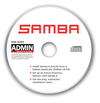« Previous 1 2
Samba 4 appliances by SerNet and Univention
Serves You Right
Samba 4 is an important milestone for the entire IT world with its new Active Directory (AD) functionality. Originally, Samba primarily provided file and print services using the SMB/CIFS protocol on a Linux server; however, the most significant new feature in Samba 4 relates to authentication services.
A Linux server with Samba 4 can provide an Active Directory service for a Windows domain without Microsoft components. Version 3.1 of the Univention Corporate Server (UCS) [1], which was released in December, uses the Samba 4 version 4.0rc6, which was further developed by the Univention developers collaborating directly with the Samba team in version 4.0rc1.
The Samba 3 version is included in UCS for file and print services, or where the UCS is deployed as an NT domain controller, is v3.6.8. The Samba 4 implementation in the current v0.6 of the Samba SerNet appliance [2] is equivalent to the stable version of Samba 4.0 [3].
Samba 4 Structure
A Samba domain comprises at least one Samba 4-based domain controller whose trust context Windows clients can join as members. In the Univention version, UCS member servers also can do this because Univention integrates Samba 4 and Samba 3 components in its Corporate Server. A UCS member server does not offer any login services itself; however, with file or print services based on Samba 3, for example, UCS credentials are needed to log in to a UCS member server.
UCS 3.1
Univention, out of Bremen, Germany, was one of the early adopters [4] of Samba 4, which it integrated more than a year ago into its Debian 6-based UCS. After extensive tests, Univention assures that
...Buy ADMIN Magazine
Subscribe to our ADMIN Newsletters
Subscribe to our Linux Newsletters
Find Linux and Open Source Jobs
Most Popular
Support Our Work
ADMIN content is made possible with support from readers like you. Please consider contributing when you've found an article to be beneficial.





